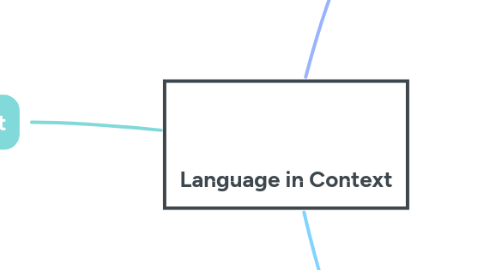
1. Social Context of Language
1.1. Speech Acts
1.1.1. Direct Speech Acts
1.1.1.1. Representative
1.1.1.2. Directive
1.1.1.3. Commissive
1.1.1.4. Expressive
1.1.1.5. Declaration (Performative)
1.1.2. Indirect Speech Acts
1.1.2.1. Types of Indirect Speech Acts
1.1.2.1.1. asking or making statements about abilities
1.1.2.1.2. stating a desire
1.1.2.1.3. stating a future action
1.1.2.1.4. citing reasons
1.1.2.2. Pinker's Theory of Indirect Speech
1.1.2.2.1. Plausible Deniability
1.1.2.2.2. Relationship Negotiation
1.1.2.2.3. Language as a digital medium of indirect and direct communication
1.2. Coversational Postulate
1.2.1. Maxim of Quantity
1.2.2. Maxim of Quality
1.2.3. Maxim of Relation
1.2.4. Maxim of Manner
2. **Neuropsychology of Language**
2.1. Brain Structures
2.1.1. Broca's Area
2.1.2. Wernicke's Area
2.2. Aphasia
2.2.1. Broca's Aphasia
2.2.2. Wernicke's Aphasia
2.2.3. Global Aphasia
2.2.4. Anomic Aphasia
3. Language and Thought
3.1. Differences among Languages
3.1.1. The Sapir-Whorf Hypothesis (Linguistic Relativity)
3.1.2. Linguistic Universals
3.1.2.1. Colors
3.1.2.2. Verbs & Grammatical Gender
3.1.2.3. Concepts
3.2. Bilingualism and Dialects
3.2.1. Types of Bilingualism
3.2.1.1. Additive bilingualism
3.2.1.2. Subtractive bilingualism
3.2.1.3. Simultaneous bilingualism
3.2.1.4. Sequential bilingualism
3.2.2. Factors That Influence Second Language Acquisition
3.2.3. Bilingualism: One System or Two?
3.2.3.1. Single-system Hypothesis
3.2.3.2. Dual-system Hypothesis
3.2.4. Language Mixtures and Change
3.2.4.1. Pidgin
3.2.4.2. Creole
3.2.4.3. Protolanguage
3.2.4.4. Dialect
3.2.4.4.1. Linguicism
3.2.5. Neuroscience and Bilingualism
3.3. Slips of the Tongue
3.3.1. Anticipation
3.3.2. Perseveration
3.3.3. Substitution
3.3.4. Reversal / Transposition
3.3.5. Spoonerisms
3.3.6. Malapropism
3.3.7. Insertions or deletion / Blending of sounds
3.4. Metaphorical Language
3.4.1. Four Key Elements
3.4.1.1. Tenor
3.4.1.2. Vehicle
3.4.1.3. Ground
3.4.1.4. Tension
3.4.2. Theories on How Metaphors Work
3.4.2.1. Comparison View
3.4.2.2. Anomaly View
3.4.2.3. Domain-interaction View
3.4.2.4. Metaphors are an non-literal form of class-inclusion statements
